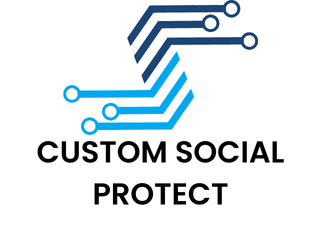Maximizing Your Digital Ad Spend: A Guide for Small Businesses in the UK
In the ever-evolving landscape of digital advertising, small businesses in the UK face a myriad of challenges and opportunities. As the digital ad market continues to grow, with global ad spend forecast to rise by 8.2% to reach $1 trillion in 2024, it is crucial for small businesses to optimize their digital ad spend to stay competitive.
Understanding the Current Digital Ad Landscape
The UK’s digital ad market is booming, with £12.5 billion spent on digital ads in the first half of 2022 alone. This growth is driven by the increasing use of mobile devices, the rise of e-commerce, and the shift from traditional offline media to digital formats.
In parallel : Essential Steps for Crafting a Responsive Design for UK Government Websites
Key Trends Shaping Digital Advertising in 2024
-
Programmatic Advertising: This method of automated ad buying is becoming increasingly popular due to its efficiency in targeting specific audiences. In the UK, programmatic ad spending has reached significant heights, with a forecasted growth rate that highlights its importance in modern marketing strategies.
-
First-Party Data Activation: With stricter privacy regulations, first-party data is becoming a goldmine for marketers. Collecting data directly from consumers allows for more personalized and engaging customer experiences while ensuring compliance with privacy laws.
Also to discover : Leveraging AI: UK Travel Agencies” Guide to Anticipating Travel Trends and Boosting Customer Satisfaction
-
Integration of New and Traditional Media: The trend of combining newer channels like connected TV (CTV) and digital out-of-home (DOOH) with traditional media is gaining traction. For instance, UK spend on CTV grew by 9.5% in 2023 and is expected to grow by 16.7% in 2024.
Crafting an Effective Digital Marketing Strategy
To maximize your digital ad spend, you need a well-thought-out marketing strategy that aligns with the current trends and your business goals.
Identifying Your Target Audience
Understanding your target audience is the cornerstone of any successful marketing strategy. Here are some steps to help you identify and engage with your audience:
- Use Data Analytics: Leverage tools like Google Analytics to gather insights about your website visitors, their behavior, and demographics.
- Conduct Surveys: Directly ask your customers about their preferences and needs through surveys or feedback forms.
- Social Media Listening: Monitor social media conversations related to your brand or industry to understand consumer sentiment.
### Example of How to Identify Your Target Audience
- **Demographics**: Age, gender, location
- **Behavioral Data**: Purchase history, browsing behavior
- **Psychographics**: Interests, values, lifestyle
- **Feedback**: Surveys, social media comments
Choosing the Right Advertising Channels
With numerous advertising channels available, it’s essential to select those that best align with your target audience and marketing goals.
Social Media Advertising
Social media platforms like Facebook, Instagram, and LinkedIn offer powerful advertising capabilities. Here’s why you should consider them:
- High Reach: Social media platforms have a vast user base, allowing you to reach a large audience.
- Targeted Ads: You can create highly targeted ads based on demographics, interests, and behaviors.
- Engagement: Social media ads can drive significant engagement, including likes, shares, and comments.
### Example of Social Media Advertising Metrics
| Platform | Ad Spend (2023) | Growth Rate (2023-2027) |
|
|----------------|
|
| Facebook | $13.45 billion | 6.03% |
| Instagram | Included in Facebook metrics |
| LinkedIn | $1.5 billion | 5.5% |
Google Ads
Google Ads is a cornerstone of digital marketing, offering several benefits:
- Search Engine Visibility: Your ads appear on Google’s search results, capturing users with high intent.
- Display Network: You can reach users across millions of websites and apps.
- Retargeting: You can target users who have previously visited your website.
### Tips for Optimizing Google Ads
- **Keyword Research**: Use tools like Google Keyword Planner to find relevant keywords.
- **Ad Copy Optimization**: Test different ad copies to improve click-through rates.
- **Landing Page Optimization**: Ensure your landing pages are relevant and user-friendly.
Programmatic Advertising
Programmatic advertising automates the ad buying process, allowing for more efficient and targeted campaigns.
- Efficiency: Automates the process of buying and selling ad inventory.
- Precision: Uses AI and machine learning to target specific audiences.
- Scalability: Allows you to manage multiple campaigns across various platforms.
### Benefits of Programmatic Advertising
- **Automated Processes**: Reduces manual effort and increases efficiency.
- **Advanced Targeting**: Uses AI to target the most relevant audiences.
- **Real-Time Optimization**: Continuously optimizes campaigns based on performance data.
Leveraging Technology and Automation
In today’s competitive landscape, using smart marketing tools and automation can significantly enhance your digital advertising efforts.
AI-Powered Marketing Tools
AI can help you create highly relevant advertisements and optimize your ad spend.
- Data Analysis: AI can analyze vast datasets to identify trends and patterns that human analysts might miss.
- Personalization: AI can help personalize ads based on individual user behavior and preferences.
- Automation: AI can automate the process of managing ad campaigns, ensuring that your budget is directed towards the most impactful channels.
### Example of AI-Powered Marketing Tools
- **Predictive Analytics**: Predicts user behavior and optimizes ad placements accordingly.
- **Content Generation**: Generates personalized content based on user data.
- **Ad Optimization**: Continuously optimizes ad campaigns for better performance.
Marketing Automation
Marketing automation can streamline your marketing processes, saving time and reducing costs.
- Campaign Management: Automates the management of multiple campaigns across different platforms.
- Lead Nurturing: Automates the process of nurturing leads through email marketing and other channels.
- Performance Tracking: Tracks the performance of your campaigns in real-time, providing actionable insights.
### Benefits of Marketing Automation
- **Time Savings**: Automates repetitive tasks, freeing up time for strategic activities.
- **Cost Efficiency**: Reduces the cost of manual labor and minimizes wasted ad spend.
- **Improved Accuracy**: Reduces the likelihood of human error in campaign management.
Practical Insights and Actionable Advice
Here are some practical tips to help you maximize your digital ad spend:
Plan Ahead for Seasonal Changes
Seasonal events can significantly impact advertising costs. Here’s how you can prepare:
- Holiday Seasons: Increase your ad spend during peak holiday seasons to capture high intent users.
- Post-Holiday Seasons: Adjust your ad spend based on the drop in demand following the holiday season.
Use Relevant and Engaging Content
Content is king in digital marketing. Here’s how you can create relevant and engaging content:
- Understand Your Audience: Create content that resonates with your target audience.
- Use Storytelling: Use storytelling techniques to make your content more engaging and memorable.
- Optimize for Mobile: Ensure your content is optimized for mobile devices, as mobile usage continues to rise.
### Example of Relevant and Engaging Content
- **Blog Posts**: Write informative blog posts that address the needs and concerns of your target audience.
- **Videos**: Create engaging videos that showcase your products or services.
- **Social Media Posts**: Use social media to share quick, engaging content that drives interaction.
Monitor and Optimize Your Campaigns
Continuous monitoring and optimization are crucial for maximizing your digital ad spend.
- Use Analytics Tools: Use tools like Google Analytics to track the performance of your campaigns.
- A/B Testing: Conduct A/B testing to identify which ad creatives and targeting strategies work best.
- Real-Time Optimization: Use AI and machine learning to optimize your campaigns in real-time.
Maximizing your digital ad spend in the UK requires a deep understanding of the current trends, a well-crafted marketing strategy, and the effective use of technology and automation. By identifying your target audience, choosing the right advertising channels, leveraging AI and automation, and continuously optimizing your campaigns, you can ensure that your digital advertising efforts yield the best possible results.
As Samantha Allison, Director of Client Services at StackAdapt, notes, “Harnessing the power of AI with programmatic advertising can offer a transformative advantage, with machine learning taking the reins to streamline complex processes and yield the most rewarding results for your investment”.
In the words of Steve Reynolds, President of Imagine Communications, “By collecting reliable and accurate data directly from consumers, marketers can trust that the data is up-to-date and reflective of the actual behavior of their audiences, allowing for more engaging customer experiences while maintaining compliance with privacy regulations”.
By following these guidelines and staying ahead of the curve, small businesses in the UK can navigate the complex digital advertising landscape and achieve significant growth in their marketing efforts.











